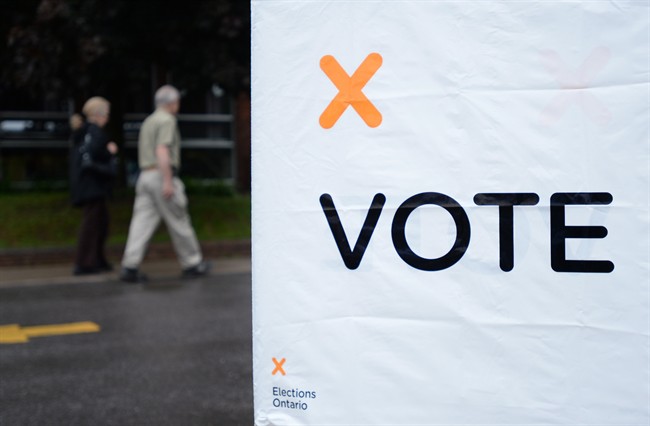TORONTO – Kathleen Wynne is still the premier of Ontario.

While the conservatives have 27 seats and the NDP 21, the Greens, the party of choice for 233,262 people, picked up zero.
Provincial and federal elections in Canada use the “first-past-the-post” system to elect politicians. That means whoever has the plurality of votes wins an entire riding. While at first glance, that makes sense, it also leaves thousands of voters effectively disenfranchised: If the party you voted for doesn’t win your riding, your vote becomes effectively useless.
Is it time to think about doing things differently?
“Most European countries, most western democracies, use some form of proportional representation,” says Dave Meslin, a volunteer with the advocacy group Unlock Democracy.
Meslin and his allies have fought for years to get proportional representation – the idea that parties should get seats in proportion to their share of the popular vote, more or less – on the agenda and on referendum ballots. But after setbacks in both B.C. and Ontario years ago, it wasn’t looking good.
READ MORE: Ontario’s voter turnout bucks 24-year trend
The city of Toronto’s endorsement of a ranked ballot system – where you rank your choices, and if your first choice doesn’t win a majority your vote goes to your second choice – and the Liberal government’s endorsement of Toronto’s preference breathed new life into the idea. So did an election many found uninspiring or marred by cynical political tactics.
Meslin said the first-past-the-post system has some inherent flaws which lead to negative campaigning and low voter turnout – two things voters have complained about in recent elections. While Ontario’s voter turnout ticked up in this election, it’s still low compared to where it was two decades ago.
Worst of all, Meslin said, the system can create majority governments that don’t in fact have the support of the majority of voters.
“The last federal election was a great example when 62 per cent of Canadians didn’t vote Conservative and the Conservatives won a majority,” he said.
“It’s kind of like, why did we just bother having an election? What was the point of that whole process?”
The two most popular alternatives are ranked ballots and mixed member proportional. The first allows voters to pick their first choice, their second choice and their third choice.
Kathleen Wynne and Andrea Horwath have supported ranked ballots in municipalities (Horwath has only lent her support to Toronto) while Tim Hudak has rejected the idea.
ELECTION RESULTS: Complete Ontario riding-by-riding election results
But as Meslin points out, all three of them came to their positions as leaders of their parties through ranked ballots.
“Every party uses runoff elections to choose their own leaders and to choose their own candidates in every single of the 107 ridings, you have to win through run off,” he said.
There’s also mixed member proportional representation where voters make two choices: their local representative and their preferred party. This system gives more representation to smaller parties like the Green Party, which picked up 4.8% of the vote but zero seats.
Do politicians want electoral reform, though? Most probably don’t: It doesn’t help established parties much.
“The government doesn’t want electoral reform; none of the parties do,” said University of Toronto politics professor Nelson Wiseman.
“If you have proportional representatives you’ll never get a majority.”
Some have criticized proportional representation for fostering fractured legislatures or helping extremist parties with no broad support have more of an impact. But its proponents argue it’s more democratic and helps people feel more engaged in the electoral process because they feel their voices are being heard.
Kathleen Wynne won a majority government Thursday with 38.7 per cent of the popular vote. The last time there was a government in Ontario elected with a majority of the popular vote was in 1929.
But Ontario voters have had the choice: There was a referendum on electoral reform in 2007. Sixty-two per cent of people voted no, while 36 per cent said yes.
“I think people didn’t really understand it,” Meslin said. “The government took a position that the government and Elections Ontario shouldn’t really fund an educational campaign about the referendum.”


Comments